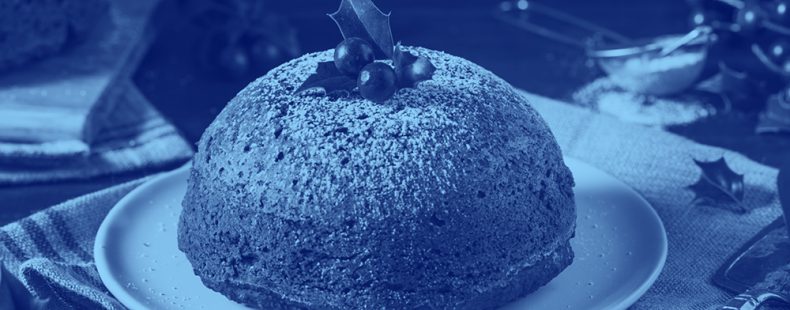You know the song. It may start by wishing everyone a merry Christmas, but then the demand starts. “Oh, bring us some figgy pudding…” with its petulant refrain, “We won’t go until we get some.” But do you actually know what figgy pudding is? And why do we sing about it, anyway?
While figgy means “containing figs,” and pudding is defined as “a thick, soft dessert, typically containing flour or some other thickener, milk, eggs, a flavoring, and sweetener,” figgy pudding isn’t just a simple combination of both ingredients. In fact, sometimes it doesn’t even contain figs, and there’s nothing pudding-like about it.
The evolution of figgy pudding
According to Taste of Home, figgy pudding dates way back to the 1300s in Britain. It was also called plum pudding, but guess what? There were no plums in it either. Plum was actually the term used to refer to any type of dried fruit, and there was some of that mixed in.
Figgy pudding was actually originally not a dessert, but rather a savory dish. It consisted of beef and mutton along with raisins, prunes, wine, and spices. Sometimes, people added grains to it, turning it into a porridge-like dish they called frumenty. From there, it went through various iterations over the years, at one point being packed into animal stomachs and intestines like sausages. Yum? Eventually, plums became more widely available and the dish took a sweet turn, transforming more into a dessert.
As for why it was the subject of a song, it’s thought to have stemmed from a tradition in which wealthy people gave out treats to Christmas carolers.
Why was figgy pudding banned?
It turns out that Oliver Cromwell (who ruled Britain in the 1600s) and other Puritans didn’t like the Christian dessert. Not only was figgy pudding traditionally made for Christmas, but the original recipe (according to some, though disputed by others) had 13 ingredients—one for Jesus and the other 12 for his disciples. So, in 1647, Cromwell banned the desert along with the singing of carols and other Christmas traditions. These traditions were seen as immoral, corrupting the pure meaning of a season that, as he viewed it, should be spent in quiet contemplation.
Thankfully, about 50 years later, King George I saved figgy pudding—earning the name “pudding king” in the process—and the dessert was once again allowed.
Making this holiday treat was no easy feat though. In the 1800s, the process took a month to reach peak form. Families gathered together on “Stir-Up Sunday” (the Sunday before Advent began) to start the process. Each family member gave the mixture a stir in order to bring good luck in the coming year.
Figgy pudding today
Funny enough, through all the years, figs were rarely ever a part of the recipe. That’s likely why the dish also goes by a number of other names including plum porridge, Christmas pudding, and steamed pudding. And whatever the name, people still eat it today. In Britain, in particular, figgy pudding is still a Christmas staple.
The figgy pudding of today is more like a fruitcake than pudding though, consisting of flour, sugar, spices, and fruit. Various recipes can be found, some of which contain figs and/or liquor, and some of which don’t. Some people douse it with booze, then light it on fire.
Around the world, there are a variety of other popular Christmas desserts stemming from long-held traditions. For example, in Germany they’re so invested in their Christstollen (meaning “after Christ”)—a cake full of raisins called stollen for short—that each one has to be inspected by the Stollen Association if it wants to bear the name Dresdner Stollen (Dresden is the city in which it originated). If they deem it acceptable, it gets a seal of authentication and a control number that tracks the bakery that made it.
In Italy, their fruit-filled cake is called panettone. Its recipe dates back to the 1400s, and according to one of the legends about its origins, got its name when a young chef by the name of Toni saved the day. The original cake to be served at a Christmas Eve feast for royalty burned, and instead they served Toni’s creation. When a Duke asked the name of the cake, he was told it was “Pan del Toni,” and the name and cake evolved from there.
There are plenty of others as well, but as far as we know, there aren’t demanding songs written about them.
WATCH: Are These Foods Fruits, Vegetables, Or Berries?
Feelin’ figgy?
So, now that you’re good and hungry after reading about all these sweet treats, we’ll leave you with a bit of learning that may be satisfying. While not used often these days, the word fig can also be used as a noun to refer to one’s dress, as in She was in full fig that night or one’s condition, I’m feeling in fine fig today. You know, just in case you want to get more figgy with it this time of year.
If you don’t give a fig, that’s okay too.














